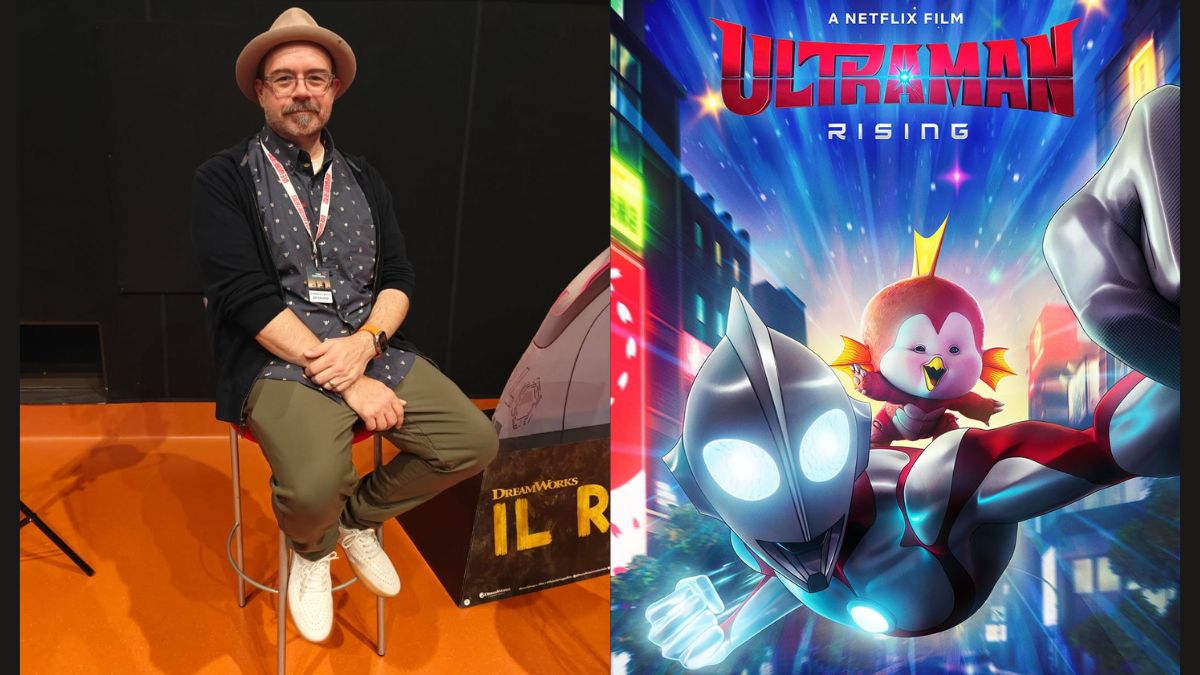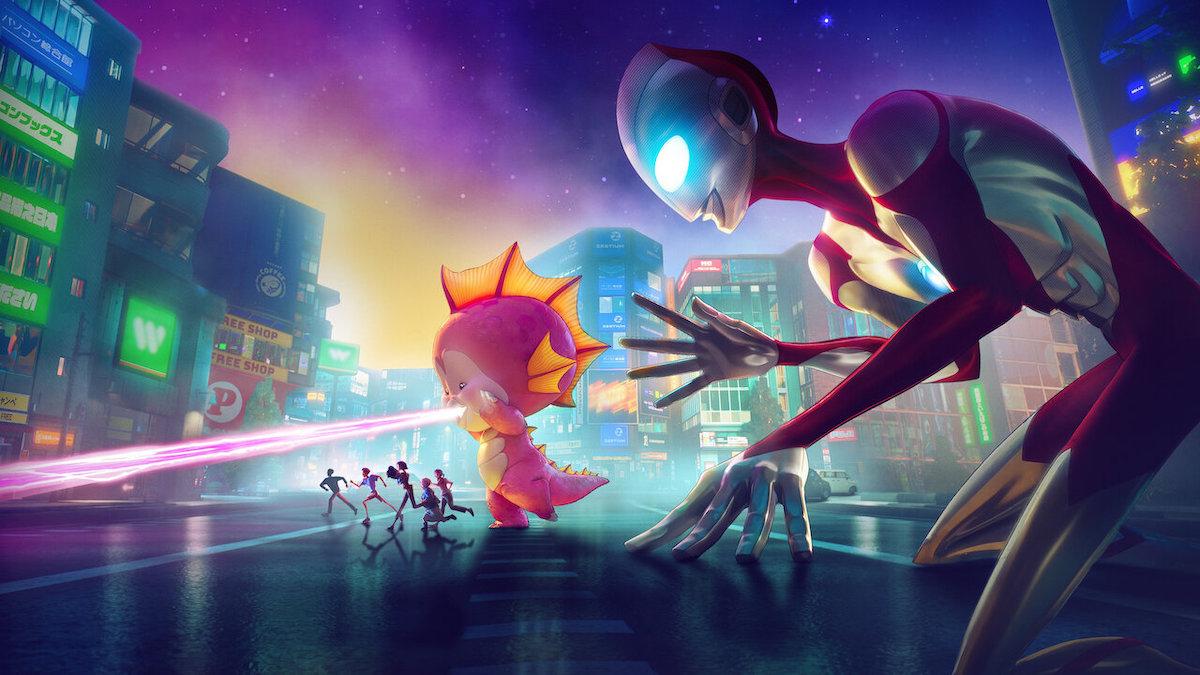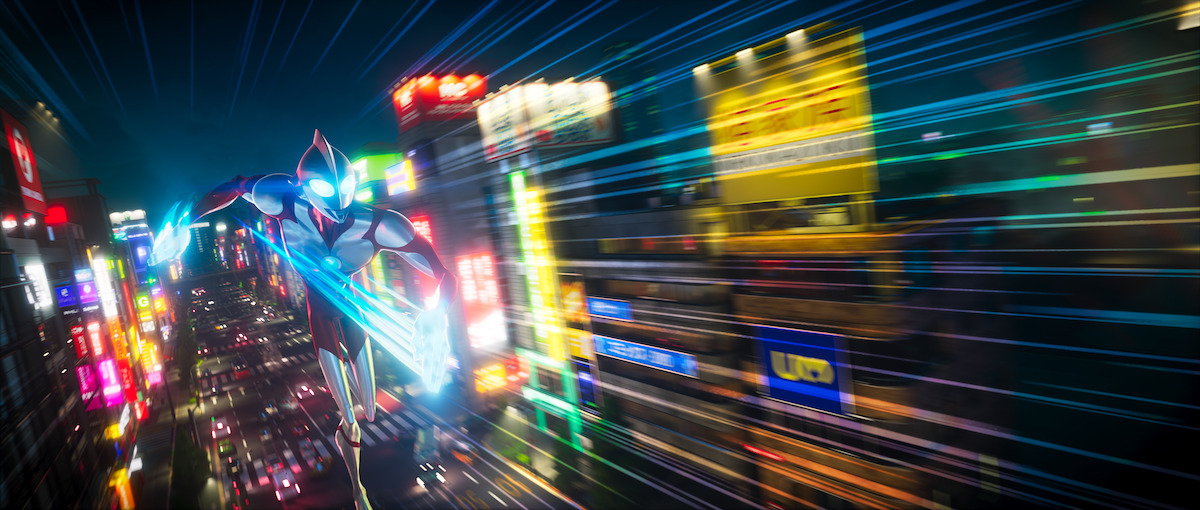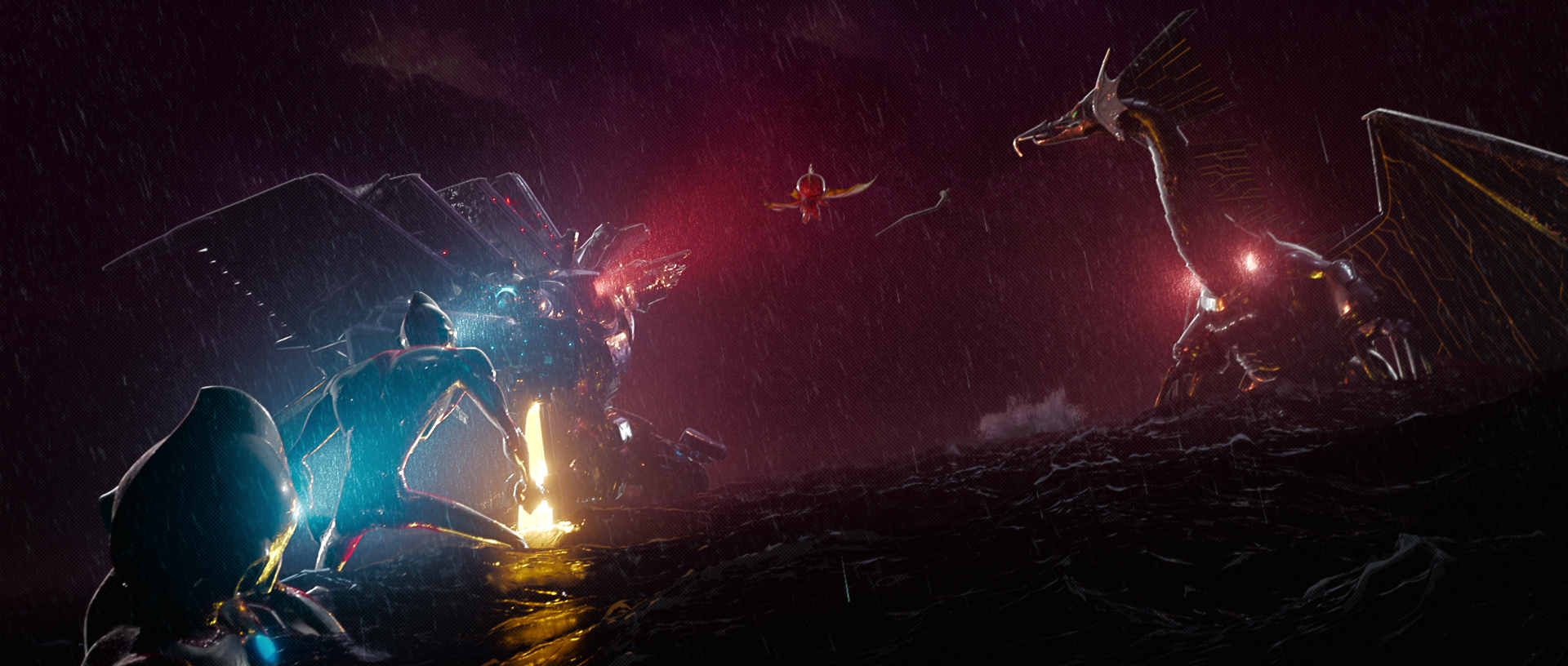In conversation with ‘Ultraman Rising’ director Shannon Tindle: Insights on storytelling, innovation, and collaboration in animation

Shannon Tindle is a storyteller in every sense of the word—a visionary who breathes life into worlds both familiar and fantastical. As the creator of Kubo and the Two Strings and now director of Netflix’s Ultraman Rising, Tindle crafts projects that resonate deeply with audiences, leaving a lasting impact. Starting as a designer and story artist, he has grown into a director, driven by his passion for creating meaningful stories. His latest film, Ultraman Rising, modernises a beloved legacy for a global audience, mixing nostalgia with fresh ideas.
At the recently concluded VIEW Conference held in Turin (Italy), Tindle, a big fan of folklore and mythology expressed his fascination with the rich, ancient histories of cultures like India and Japan, saying, “It gives me chills to think about the stories yet to be told from those cultures.” He also shared his desire to see a stop-motion film emerge from India, believing that the country’s vibrant artistic traditions could produce something truly stunning.
During the conversation, Tindle opened up about his creative process, the evolution of his career, what went into the making of Ultraman Rising, and his perspective on the animation industry. One thing that stuck with us was his optimistic perspective on the current landscape: “We’re having a lull now, but that’s what this business is. It’s peaks and valleys, and we’re in a valley right now, but I think we’re all crawling our way out of it. I just hope for myself and my colleagues that we’ll be able to continue to tell incredible stories.”
Here’s an excerpt from the conversation with the visionary filmmaker who continues to push the boundaries of animation and storytelling.
You’ve transitioned from character designer to director. Can you share more about your journey and whether you always envisioned yourself as a director?
I never really set out to become a director, but in animation, every role is about storytelling in some way. As a character designer, you’re trying to tell the story of the character without them saying a word—through how they dress, stand, or even style their hair. I always knew I had stories inside me that I wanted to share. When I started pitching these stories, I realised I didn’t want to hand them off to someone else. So, naturally, I thought, “If I want to tell this story from my perspective, I guess I should be the writer and the director.” It was less about chasing a title and more about wanting to tell stories that felt personal to me. And being both the writer and director seemed like the best way to do that.
Your projects often have a strong emotional core and distinct animation styles, such as in Kubo and the Two Strings, Lost Ollie, and now Ultraman Rising. How do you decide which medium and style best fits your storytelling? Where do your story ideas originate?
It depends on the tone of the story. For Kubo and the Two Strings, I had already worked with Laika on Coraline, and I knew they were a studio willing to take risks with stories that explored deep emotions and darker themes. I knew Kubo would be a tough sell to big Hollywood studios, so Laika was the right fit. Plus, the handcrafted nature of the story fit well with stop-motion, especially with elements like origami and kirigami, which are rooted in Japanese culture. My wife (Megan Brain) is a paper artist, and she even worked on the film, which added a personal touch.
With Ultraman, the scale was a big factor. We needed a believable yet free-moving camera to capture the huge shifts in scale that the story required. I wanted to create a new visual style—one that combined a 3D camera with a more illustrative look. Since I had already worked with ILM, I knew they were the right team for this.
As for Lost Ollie, it was always going to be a live-action hybrid. When Netflix approached me, that was already the plan. Initially, we considered using puppets with digital face replacements, but with only 33 days to shoot—essentially filming two movies—we didn’t have the time to give the puppeteers what they needed for that process. So, we decided to go fully digital for the characters, which allowed us to meet the production schedule.
So, it’s less about the medium and more about whether the studio is the right fit for the story. I’ve worked in 2D, CG, and stop-motion, but the key is finding a studio that understands the emotional tone and vision.
Ultraman has a rich legacy. How did you modernise the character for a global audience while preserving its original essence?
What’s interesting is that before it was Ultraman, I had a different character inspired by him. I just wanted to tell a story that felt personal to me. When Tsuburaya Productions came to me and said they wanted to collaborate and let me work with the character, that’s when I started to weave in the lore. The main rule for me was that we’d only include the lore if it genuinely supported the story we were telling. If it felt distracting or like unnecessary fan service, it didn’t make the cut. My priority was always to tell a great story. There were a few elements from the original series that I really wanted to incorporate, and because we focused on making a solid film, and because I’m such a huge Ultraman fan, those elements found their way in naturally. It’s been amazing to see that both newcomers and hardcore fans of Ultraman are enjoying the film. So as an Ultraman fan, it was the best thing in the world.
How did you balance nostalgic elements that longtime fans expect with fresh storytelling to attract a younger audience?
The key was incorporating the lore in a way that felt organic and supported our characters—whether it was Ken, his father, or the kaiju. We included classic kaiju like Bemular and Neronga because they fit naturally into the world and the story, and I knew the fans would enjoy seeing them. At the same time, we introduced new kaiju like Emi and Mecha Gigantron. Ultraman is one of those franchises that evolves every year with a new series, so it’s already proven to be malleable, making it a perfect vehicle for telling a fresh story since change is part of its identity.

Ultraman Rising
Can you elaborate on your collaboration with the animation team at ILM and how you brought the Ultraman world to life visually?
When people work with a big effects house, they often see them as just a vendor. But I’ve always believed in treating them as true creative partners because that’s how you make the film better. We never referred to them as vendors; it was all about collaboration and open communication. I always told the ILM team, “If you’re facing challenges, let us know. We can help.” I didn’t want to impose demands; I wanted to protect our film’s resources and avoid wasting them.
Over the years, I’ve developed a close friendship with Hayden (Jones) and Steph, which allows for honest conversations. They knew the challenges from the start, but you could see (during the session) how they evolved through the process. The early test looked great, but what they achieved in the final film exceeded all expectations, thanks to their collaborative spirit. We listened to each other, and when you work together as friends and true collaborators, the results improve dramatically. I’m already circling a couple of new projects, and I can’t wait to work with them again.
What you said was actually brilliant, treating them as a partner rather than a vendor, because that is mostly what’s done in the industry. And it was nice of you to say that. What was the biggest challenge you faced while working on Ultraman Rising?
The biggest challenge for me was that when I started on the film, Netflix had only produced a couple of animated films. The streaming world thrives on constantly creating new content quickly, but animation doesn’t work that way; it takes a long time to produce. So, getting things up and running in a new studio environment was a hurdle. They were very supportive, which helped, but it was definitely a challenge to navigate a system that thinks and operates differently than other studios I’ve worked with. I had to find a way to tell a compelling story within that framework.

Ultraman Rising
With advancements in animation technology, how did you leverage cutting-edge tools to enhance storytelling in Ultraman Rising?
We knew from the start that we wanted a fresh look, so we leaned into the latest tools available. My good friend Dylan Sisson from the Renderman team at Pixar introduced some exciting stylised tools which were developed with projects like ours in mind. I love exploring new technology; it usually doesn’t intimidate me—though sometimes it can! When I collaborate with tech or music experts, I focus on what I need to achieve in the story rather than getting into the technical nitty-gritty. I won’t tell someone how to code or compose music, but I’ll explain my vision and what I need. When you approach them like that, they’re eager to help because they also want to tell a great story. So, we used fantastic tools, but always in service of the story we wanted to tell.
How has your experience been working with Netflix?
It’s been great. When I first started, Netflix was really taking bold risks, which allowed me to do things in this film that I might not have been able to do at other studios. Sure, there’s always some friction, but often that leads to great outcomes and productive conversations. They were also keen to establish their presence, constantly pushing me to create the best film possible. I got to make the movie I envisioned, and I don’t think anyone else would have taken that gamble. I’ll always be grateful to Netflix for the opportunity.

Ultraman Rising
Where do you see the animation industry heading in the next three years?
It’s tough to predict exactly what will happen, but I think there’s a lot of excitement around generative AI. People may soon realise it can’t quite deliver on its hype. Even major studios like Disney are cautious because AI has been trained on their competitors’ copyrighted content, which raises concerns. Unfortunately, this might lead to some job loss in certain areas, but it’s also an opportunity; just like when 2D animation declined in big-budget films, and we shifted to CG, which created new roles that didn’t exist before. While it’s hard to predict, I hope that people will adapt and retrain for new jobs.
Animation has proven to be a lucrative field—this year, for the first time ever, five animated films made it into the top 10 at the box office, and seven of the top 10 on streaming were animated. Clearly, audiences want these stories, and they want them told through animation. We might be experiencing a lull now, but that’s typical in this industry with its ups and downs. I’m optimistic that we’ll work our way out of this phase, and I hope to continue sharing amazing stories with my colleagues in the future.
What’s the thing that keeps you pushing the boundaries of animation and storytelling?
One film that resonates with me is Barry Jenkins’ Moonlight. It’s not a genre film, but it transported me in ways I never expected. I may never know exactly what Chiron experiences given his background and struggles, yet the film helped me empathise with those in similar situations. That’s the magic of storytelling—it enables us to understand and empathise with others, which is an incredibly powerful tool, especially in a world often filled with cynicism. We encounter so much negativity in our daily lives, but storytelling has the potential to unite us. We’ve always done it, and we always will. By removing that constant negativity, we can bring people together through the narratives we create.
That actually connects to my next question, which is your favourite animated film?
My favourite animated film? That’s a tough one because it changes so often! I have so many beloved animated films, but one that truly made a huge impact on me as a kid was Sleeping Beauty. I’ll never forget seeing it in the theater during its re-release when I was about five or six. At the time, I didn’t realise it was projected in CinemaScope, but the colour and richness of that world completely immersed me.
It was the first animated film I ever saw on the big screen, and it changed everything for me. I was blown away—this was the moment I thought, “Oh my God!” I’ve always loved to draw, and seeing those moving illustrations brought to life with such brilliant production design by Eyvind Earle and character design by Tom Oreb was astonishing. The animation by Marc Davis, Milt Kahl, Frank Thomas, and Ollie Johnston made those characters resonate in a way that not many others have.
What advice would you like to give to budding animators who aspire to get into character designing or directing?
I would say, always approach your work in a personal and narrative way. Every aspect of animation is about storytelling, so don’t just try to cater to the market. Focus on what you believe in. For instance, I started doing commissioned drawings on my Instagram feed purely for myself. I deal with topics like depression and cooking, and I created those drawings as a form of expression. Surprisingly, many people reached out to share what those drawings meant to them, even though I was just creating for my own enjoyment.
So what I would say is, when you’re building your portfolio or working on projects, try and put your heart and soul into it and people will respond to it. I wasn’t trying to build an audience; I was simply doing something I loved and giving myself assignments to keep my drawing and storytelling skills sharp—especially during the pandemic when I started those drawings. So, my advice is to create personal work. That doesn’t mean you won’t collaborate with others or support someone else’s vision; it just means that you should bring your heart and soul into everything you do, and people will definitely notice it.
Definitely, and what you’ve done has inspired a lot of people as well. So, for the last question—what’s next in the pipeline for you?
I can’t reveal too much, but there are a couple of exciting things in the works. Right now, there’s a real buzz around more mature storytelling in animation. With the success of shows like Blue Eye Samurai, which my friend Michael Green showran and Jane Wu executive produced—they’re both incredible talents—and with Arcane making waves, there’s a lot of interest in exploring deeper, more complex narratives. I’m developing a series with Shadowmachine, the same producers behind Guillermo Del Toro’s Pinocchio, and I’m really excited about it. Additionally, I’m in discussions about a film centered around a very popular character, aimed more toward adult audiences, and we’re looking at really pushing the boundaries of what animation can do—both in style and storytelling. But that’s all I can say for now!
Source: Prerna Kothari/ANIMATIONEXPRESS

熱門頭條新聞
- Annecy Official selection 2025
- GDC 2025 Draws to a Successful Close
- Star Wars Expanding Ehrough Media From Spinoffs To Theme Parks
- GamesBeaat Summit 2025
- Lexar Wins iF DESIGN AWARDS
- Marvel Rivals Unveils Details for Season 2: Hellfire Gala
- TOKYO INDIE GAMES SUMMIT Reaches Record-Breaking Attendance
- Love, Death, and Robots Season 4 is coming to Netflix this May
